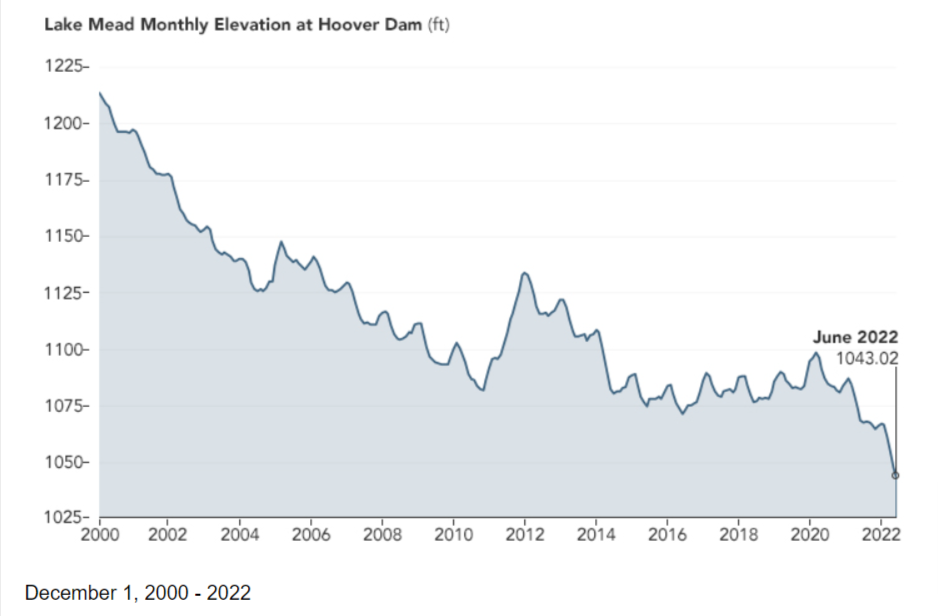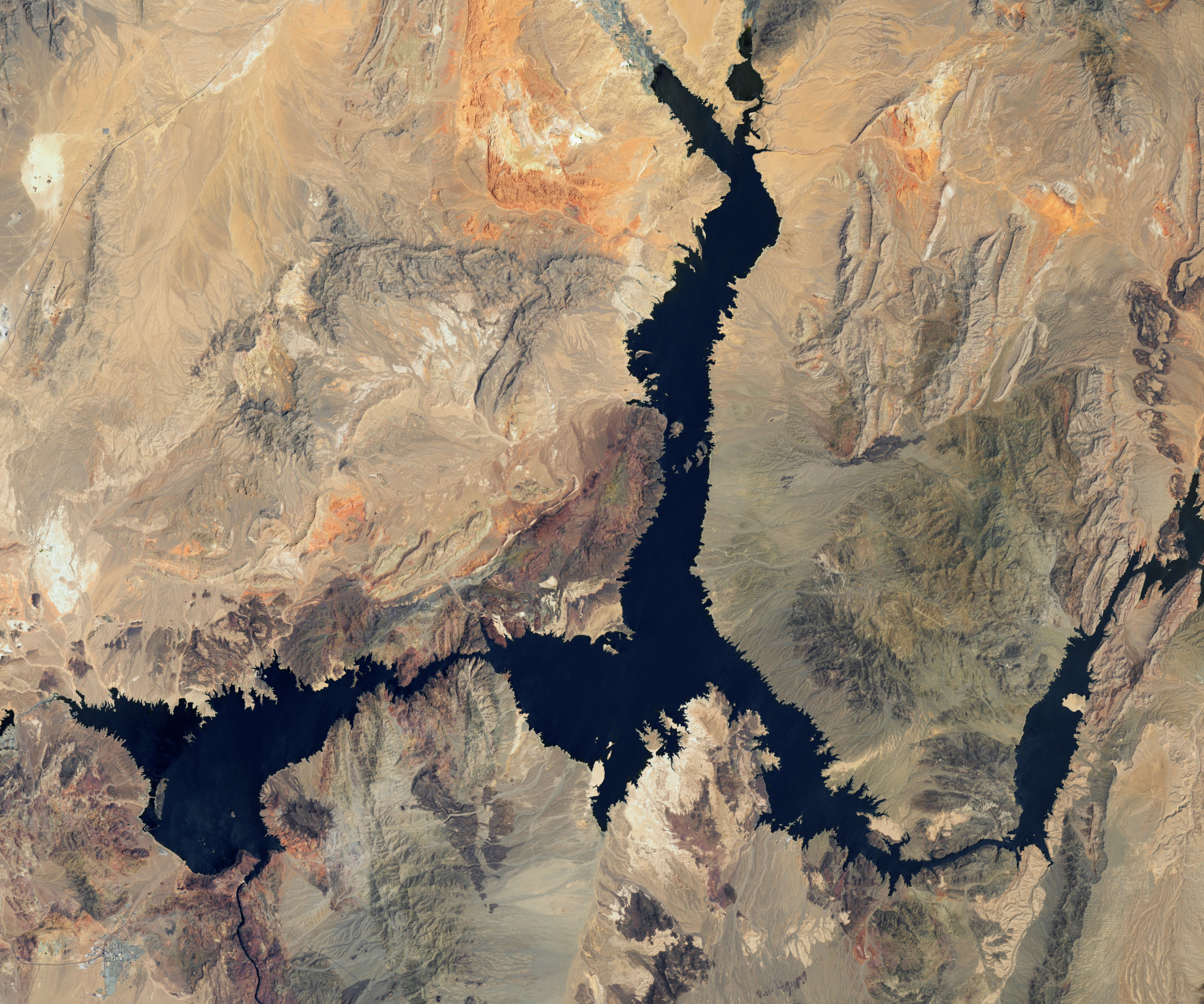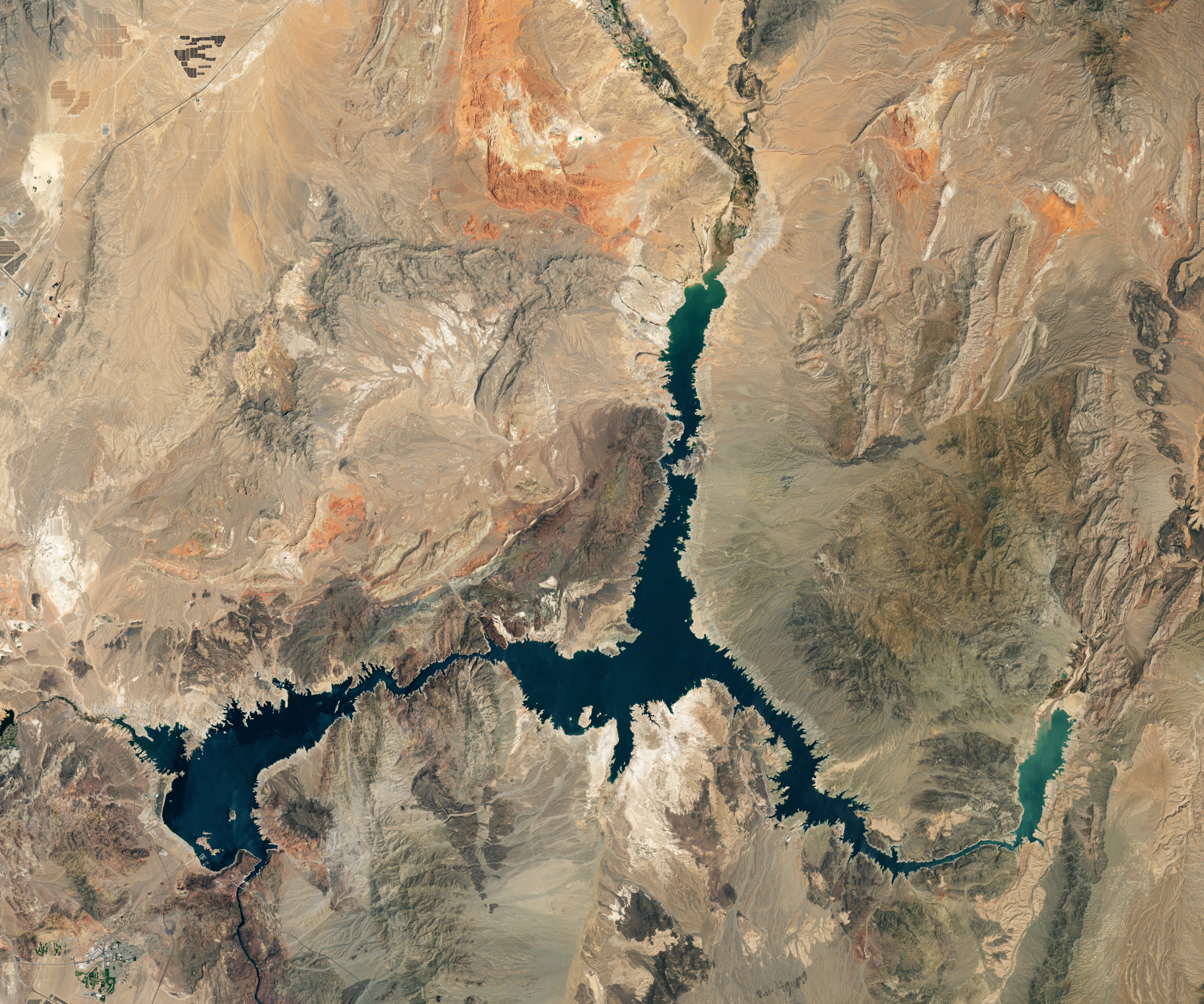As the historic 23-year megadrought in the American West, the worst in the region in over 1,200 years, continues to dry up the Colorado River, water levels at the nation’s two largest reservoirs (Lake Mead and Lake Powell) have been pushed to record lows.
“The prolonged drought afflicting the West is one of the most significant challenges facing our communities and our country,” US Deputy Secretary of the Interior Tommy Beaudreau said. “The growing drought crisis is driven by the effects of climate change, including extreme heat and low precipitation.”

The new lows at Lake Mead and Lake Powell, both of which have been overused for years, now threaten the water security of some 40 million Americans across seven states (Arizona, California, Colorado, Nevada, New Mexico, Utah, and Wyoming) as well as the region’s power generation and agricultural industry, valued at $15 billion a year.
With three-quarters of the water in these two reservoirs already drained, the US has never come closer to having so many citizens stripped away of drinking water; and neither has any other developed, Western country in the 21st century.
As US Bureau of Reclamation commissioner M Camille Calimlim Touton explains, “[t]he system is approaching a tipping point”; protecting the systems means protecting the “people of the American West,” Touton adds.
At a Senate hearing in June, the US Bureau of Reclamation gave the seven affected states an ultimatum: Negotiate their own water reductions by August 15 (a 60-day deadline) or the federal government will enforce mandatory cutbacks.
“It is in our authorities to act unilaterally to protect the system, and we will protect the system,” Bureau of Reclamation chief Camille Touton said back in June. “We need to see the work. We need to see the action. Let’s get to the table and let’s figure this out by August.”
What the states needed to figure out specifically was how to use 15-30% less water in 2023.
Not too surprisingly given the scale of the task and all the different interests at stake, the seven states failed to reach an agreement by the August 15 deadline.
According to Southern Nevada Water Authority general manager John Entsminger, the two-month negotiations “produced exactly nothing in terms of meaningful collective action to help forestall the looming crisis.”
So the talks yielded no agreement by August 15 and the federal government was now meant to intervene and take things into its own hands, as it threatened to do; but instead, the US government gave the states more time to negotiate, without specifying a new deadline.
It declared a “Tier 2” water shortage in the Colorado River on August 16 and announced additional water cuts in Arizona, Nevada and Mexico; as a result of a 2019 deal, however, these cuts were already meant to be triggered in case water levels at these two reservoirs dropped below a certain threshold.
To make things worse, these additional cuts are even smaller than what the 2019 deal proposed and represent a fraction of what experts say is needed.
Related Articles: Water Crisis in the West Begins: Colorado River Basin on the Edge of Extinction | Five Regions in Italy Declare State of Emergency Over Water Crisis
This marks the second consecutive year that the US has declared a water shortage in the Colorado River and imposed water cuts. Last year, and also for the first time, it declared a “Tier 1” water shortage, implementing mandatory 18% water cuts in Arizona, 7% in Nevada, and 5% in Mexico.
But the region has remained dry since last year’s measures and has received so little rain and snow that the situation did not improve sufficiently enough.
“We thought we were good, but the last few years have been so dry that we realized those tier reductions weren’t enough and aren’t enough,” the Colorado River resources manager Bill Hasencamp said. “So the two things we’re focused on is how do we get through the next three years without the system crashing, and then how do we develop a long-term plan to sustain the Colorado River.”
Assistant secretary of Interior for water and science Tanya Trujillo says the US Bureau of Reclamation will now develop a “detailed workplan” for protecting the endangered system, which, as Politico points out, requires an administrative process to implement and “comes with its own set of legal and political landmines.”
The tangible actions the US is taking now, Politico explains, “relate to preparing to operate the reservoirs at critically low levels.”
“We have made progress, but also have work ahead in partnerships with all parties to achieve consensus solutions to conserve water and support communities stricken by the drought,” Deputy Interior Secretary Tommy Beaudreau told reporters, reasoning that “there is still time.”
Other officials, none of whom mentioned a new deadline for action, said work will continue on additional agreements “throughout the rest of the year, at least,” according to Politico.
“As these discussions continue, we urgently call on everyone who relies on Colorado River water, including communities across Southern California, to prepare for reduced supplies from this source, permanently,” the district’s general manager Adel Hagekhalil said. “This is not simply a drought that will end, allowing reservoir levels to recover on their own – this is a drying of the Colorado River Basin.”
Editor’s Note: The opinions expressed here by the authors are their own, not those of Impakter.com — In the Featured Photo: Lake Powell Half Empty. Featured Photo Credit: NASA.











